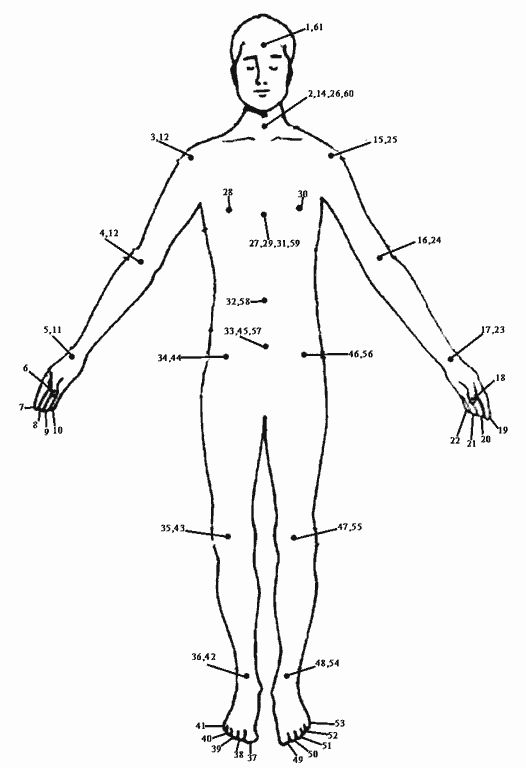By Stephen LaBerge.
A practical and short summary of the book Exploring the World of Lucid Dreaming by Stephen LaBerge. You will find here the step by step guide to become a Lucid Dreamer.

You can find the full size MindMap here.
- The World of Lucid Dreaming
- Preparation for Learning Lucid Dreaming
- Waking Up in the Dream World
- Failing Asleep Consciously
- The Building of Dream
- Principles and Practice of Lucid Dreaming
- Adventures and Explorations
- Rehearsal for Living
- Creative Problem Solving
- Overcoming Nightmares
- The Healing Dream
- Life Is a Dream: Intimations of a Wider World
1- The World of Lucid Dreaming
Lucid Dreaming is being consciously aware to be dreaming. Lucid Dreaming permit to experience the impossible, solving problems, practice a sport etc.
We dream mainly in REM state of sleep.
2- Preparation for Learning Lucid Dreaming
Record your Dreams
In order to become lucid in a
- Don’t move when you wake up, try to remember your dream.
- Describe the way you felt in the dream, emotional reactions,
anyhting unusual, kind of things that would never occur in waking life. - Be aware of your dream signs
- Inner Awareness
- Action
- Form
- Context
- We are more likely to lucid dream in the last two hours of sleep, we can extend our sleep by 2 hours to increase the chance of lucid dreaming. Or Go sleep at 00:00 wake up at 4:00, set your intentions for the lucid dream and go back to sleep from 6:00 to 8:00 (using an induction technique).
If you don’t remember your dream when you wake up, try setting an alarm clock to awaken you at a time when you are likely to be dreaming. Since REM periods occur at approximately ninety-minute intervals, good times will be multiples of ninety minutes from your bedtime. Aim for the later REM periods by setting the alarm to go off at four and a half, six, or seven and a half hours after you go to sleep.
Relax
Use meditation techniques, for example:
- Breathing and Muscles relaxation.
- 61 Points relaxation.

3- Waking Up in the Dream World
- Ask yourself if you are dreaming while you are Awake (4/5 times a day), prefer unusual situations or that look like dreamsigns.
- Use a reality test:
- Watch
- Watch your hands
- Jump
- Read something, look away, and re-read
- In your bed, before fall asleep visualize you are dreaming, imagine a dream you would like to have, include as many dreamsigns as possible. Intention and auto-suggestion influence lucid dreams.
Mnemonic Induction of Lucid Dream (MILD)
- Before going bed resolve to wake up and recall dreams.
- When you awaken (you can set an alarm), try to recall as many details as possible from your dream (note them in your journal).
- While returning to sleep concentrate on your intention to remember to recognize that you are dreaming: “Next time I’m dreaming, I want to remember I’m dreaming”.
- At the same time, imagine you are back in the dream from which you have just awakened, but this time you recognize that it is a dream. Find dreamsigns. “I am dreaming!”. Imagine what you want to do next.
- Repeat step 3 and 4 until you fall asleep.
Autosuggestion Technique
- Relax completely (relaxation techniques)
- Tell yourself that you will have a lucid dream, tonight or another night (do not strongly insist).
4- Falling Asleep Consciously
Wake-Initiated Lucid Dreams (WILDs)
WILDs are less frequent than DILD (Dream-Initiated Lucid Dreams).
Techniques:
- Hypnagogic Imagery Technique
- Power of Visualization: White dot Technique
- Power of Visualization: Black dot Technique
- Dream Lotus and Flame Technique
- Count Yourself to Sleep Technique
- The Twin Bodies Technique
- The One Body Technique
- The No Body Technique
5- The Building of Dream
(1) Dreams are products of
- So if you believe you can’t, you can’t.
- When you face an unusual situation say to yourself that you will dream about that this night and firmly focus yourself to recognize you will be dreaming.
6- Principles and Practice of Lucid Dreaming
In the begining, the moment we take a bit too much interest in some facet of the dream, lucidity can vanishes. In order to stay in the dream and do not awake or lose lucidity, you can use these techniques.
- You can repeat yourself: “I am dreaming, I am dreaming”.
- The Spinning Technique
- Engage your Senses
The Spinning Technique
- Notice when your dream begins to fade.
- Spin as soon as the dream begins to fade.
- While spinning, remind yourself that the next thing you see will probably be a dream.
- Test your state wherever you seem to arrive.
You can take the habit to always look to your watch when you wake up so you can make your
Engage your senses
Focus your senses and concentrate on (the goal is to maintain active participation in the dream):
- What you are touching: bring your hand together and feel it.
- What you are hearing: focus on your breathing.
- What you are seeing.
At the opposite, if you want to wake up:
- Imagine a bed in your dream, lie down on it, shut your dream eyes and you will wake up.
- Blink your eyes three times in your dream.
- WIthdraw your attention from the dream: fix something with your eyes for example.
Lucid Dream Incubation Technique:
- Formulate your intention, choose your dream, write down a phrase, draw a picture and write what you want to do in the dream.
- Go immediately to bed.
- Focus on your phrase and intention to become lucid.
- Pursue your intention in the lucid dream.
- When you have achieved your goal, remember to awaken and recall the dream.
Change your dream scene
To change your dream scene you can use the Spinning Technique.
- Select a target before going to sleep, memorize the phrase.
- Resolve to visit your target.
- Spin to your target in your lucid dream.
Or you can use The Change the Channel Technique:
- Change the context slowly, a simple detail, then rapidly and more widely. Think of everything you see as infinitely malleable.
7- Adventures and Explorations
You can write an entire script on what you want to dream when you are awake and implement it once you become lucid in your dream.
- Read your script before going to bed.
8- Rehearsal for Living
“Peak performance”
Peak Performance refers to those extraordinary moments when body and mind seem to operate together at the very top of their capacity.
You can achieve this peak performance by practising what you want to improve in your lucid dream. Use lucid dreaming as a tool for learning and practising skills.
Lucid Dream Workout:
- Set your intention before going to bed, think about the skill you want to practice and notice the problems you want to work on. Remind yourself that you want to practice it tonight in your dream.
- Induce a lucid dream.
- Set up your practice environment.
- Practice, aiming for the best.
- Push the boundaries of your potential.
When we conceive of what we would like the future to bring, what we would like our lives to become, we are preparing ourselves to attain that future.
9- Creative Problem Solving
- Phrase your question.
- Incubate a dream about your problem.
- Use your lucid dream to generate solutions. (Visit Einstein for example or
naviagte in the world seeking for the answer). - Remember to awaken and recall the dream once you have an answer.
You can also use a hypnagogic reverie technique: Tie in the bed with your forearm perpendicular to the mattress, fall into your familiar fantasy workshop, and if you fell into a deeper sleep, your forearm would fall to the mattress and awake you.
Create your Lucid Dream Workshop
You can create your own Lucid Dream workshop where you can go every time you need to solve a problem. Include as many things as you want. You can also include doors that go in other pieces or other worlds…
10- Overcoming Nightmares
How lucidity can help work through anxiety-provoking situations: The
- When having a nightmare, face it, go to the person or the situation that make you anxious and encounter it, talk to it, ask him questions, smile and tell him you are not afraid.
- Fear is your worst enemy in dreams. If you allow it to persist it will grow stronger and your self-confidence will diminish.
- Resolve conflicts, face your fears do not run away.
Example: if you dream about falling imagine you land slowly or you start flying.
We dream about what we expect to happen, both what we fear and what we hope for.
Example: Little girl nightmare with a
If you face a Sleep paralysis:
- Remember it is a dream, therefore harmless.
- Relax and go with the experience. Be curious.
Dream Reentry
- Recall and record the (recurrent) nightmare.
- Choose a reentry and new action.
- Relax completely.
- Redream the nightmare, seeking resolution.
- Evaluate your redreamed resolution.
- If the dream recurs, follow your redreamed plan of action.
11- The Healing Dream
Seek for your difficulties and go encounter them to solve them.
The true way to healing is to seek out the barking dogs of the unconscious and reconcile with them.
- Set your intention to deliberately seek out a problem when you will dream. “Tonight I will openly face
a fear in my dreams.” - Induce lucidity.
- Look for problems in the dream. Repeat the phrase.
- Face the difficulty.
- Reward yourself with pleasure.
You can also go and talk with a person that passed away. Or finish something you want to finish.
Reach Mindfulness and mental flexibility. Cure an illness with lucid dreaming.
12- Life Is a Dream: Intimations of a Wider World
- Seeking the Highest
Bonus
- Understanding the value of the Will
- Think of the problems caused by a lack of will.
- Think of the benefits of a strong will.
- Create an image of yourself with a strong will.
- Strengthening Your Will
- Candle Concentration
- Visualization Training
